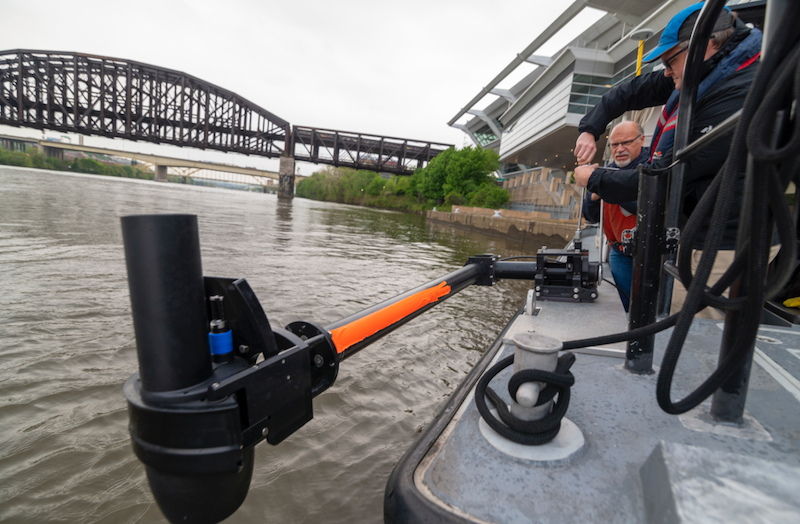Sometimes, surveying the waterways becomes more exciting than expected. What was supposed to be a routine water survey turned into a vehicle recovery from the bottom of the Allegheny River in April.
"We had a survey job to do, actually, up by Allegheny Locks and Dams 5, and on the way back, Brett and I thought, ‘Hey, let’s go ahead and just scan this ramp over here,’” said George Brkovich, a waterways inspector with the U.S. Army Corps of Engineers Pittsburgh District.
Brett Kelly, one of his survey teammates, is a geographer with the Pittsburgh District. He creates maps for the district’s geospatial section. The team’s survey boat is equipped with a multibeam sonar that can collect data to generate 3-D imaging.
In 2020, Kelly and Brkovich helped local police on a missing person case, scanning various areas but turning up with nothing useful. In April, Brkovich had a hunch to do an impromptu scan after he and Kelly completed a district job. They decided to scan near a ramp in Springdale, Pa.
“I think we found something here, George. I think we found a car,” Kelly told his partner, who has been working for the district for four years.
A diver team recovered the car. According to news reports, police believe was set on fire and dumped into the river. Fortunately, nobody was inside, but it still made for an unusual find, Brkovich said.
Investigating for abandoned cars in the Allegheny River happens on occasion when law enforcement reaches out to the Pittsburgh District for help, but it is not their primary job.
As part of the Pittsburgh District, the two-man team conducts various surveys that help with navigation. The sonar collects data by sending out multiple, simultaneous sound waves in a fan-shaped pattern that can detect water depth and obstructions that may impact navigation within the Pittsburgh rivers. The data helps detect erosion over time.
While Brkovich steers the boat, Kelly works a computer that controls the sonar and collects its data.
“I call them artists,” Brkovich said of Kelly and the other cartographers. “They put this all together using multiple sound beams hitting off the river bottom, and there’s disturbances here and there, and these guys get it together. They sit down and clean it up. You get an end product that we can use for safety and navigation.”
Without this equipment, the district would have to outsource sonar surveying to contractors, which can get expensive, said Kelly. Plus, he enjoys this work.
“I love doing field work. I love being out,” Kelly said.
The team conducts underwater surveys two to three times a month, and sometimes they respond to more immediate needs, like a barge scraping the ground or striking something.
“We can go out and check it out immediately or within hours,” Kelly said.
Brkovich said they often run multiple missions at once on the river. His main roles involve inspecting and issuing permits for marinas and barge docks. His mission helps the district work with state partners to ensure safe waterways for everyone who uses the Pittsburgh rivers, from 60' industrial barges down to recreational kayakers. The district’s regulatory department monitors approximately 332 miles of riverfronts. Brkovich also monitors water quality and assesses operations of 16 reservoirs.
Brkovich has 19 years with the Corps of Engineers and 20 more with the Coast Guard as a boatswain’s mate.
“I've been on the water for many years now. I love it. Yes, I do,” he said.




